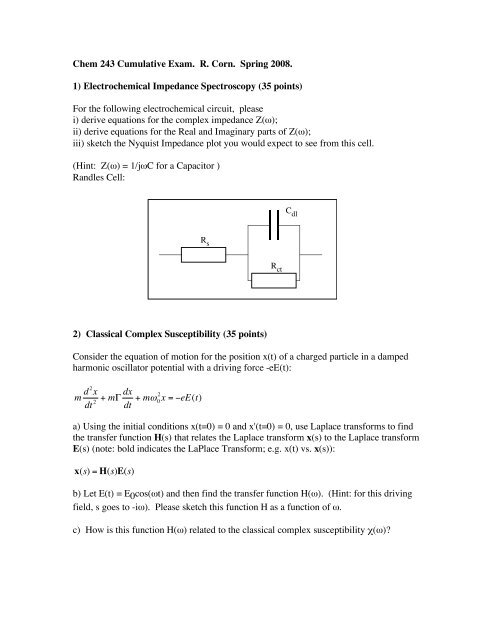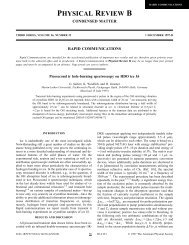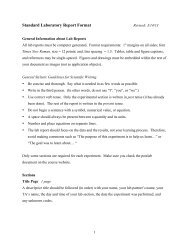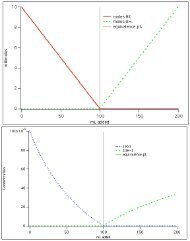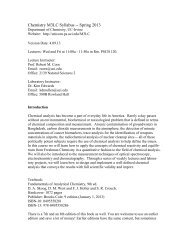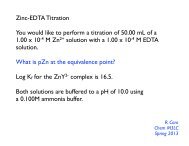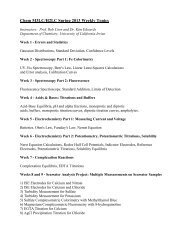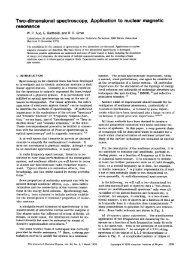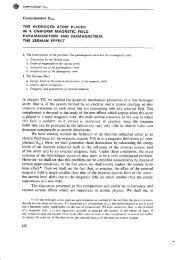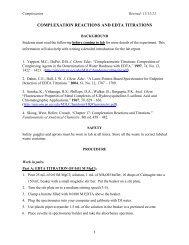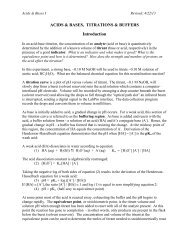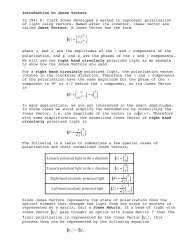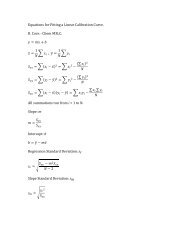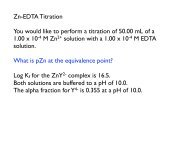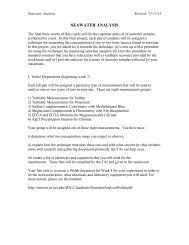Chem 243 Cumulative Exam. R. Corn. Spring 2008. 1 ...
Chem 243 Cumulative Exam. R. Corn. Spring 2008. 1 ...
Chem 243 Cumulative Exam. R. Corn. Spring 2008. 1 ...
You also want an ePaper? Increase the reach of your titles
YUMPU automatically turns print PDFs into web optimized ePapers that Google loves.
<strong>Chem</strong> <strong>243</strong> <strong>Cumulative</strong> <strong>Exam</strong>. R. <strong>Corn</strong>. <strong>Spring</strong> <strong>2008.</strong><br />
1) Electrochemical Impedance Spectroscopy (35 points)<br />
For the following electrochemical circuit, please<br />
i) derive equations for the complex impedance Z(ω);<br />
ii) derive equations for the Real and Imaginary parts of Z(ω);<br />
iii) sketch the Nyquist Impedance plot you would expect to see from this cell.<br />
(Hint: Z(ω) = 1/jωC for a Capacitor )<br />
Randles Cell:<br />
C dl<br />
R s<br />
R ct<br />
2) Classical Complex Susceptibility (35 points)<br />
Consider the equation of motion for the position x(t) of a charged particle in a damped<br />
harmonic oscillator potential with a driving force -eE(t):<br />
m d 2 x dx<br />
+ m"<br />
2<br />
dt dt + m# 2 0<br />
x = $eE(t)<br />
!<br />
a) Using the initial conditions x(t=0) = 0 and x'(t=0) = 0, use Laplace transforms to find<br />
the transfer function H(s) that relates the Laplace transform x(s) to the Laplace transform<br />
E(s) (note: bold indicates the LaPlace Transform; e.g. x(t) vs. x(s)):<br />
x(s) = H(s)E(s)<br />
!<br />
b) Let E(t) = E 0 cos(ωt) and then find the transfer function H(ω). (Hint: for this driving<br />
field, s goes to -iω). Please sketch this function H as a function of ω.<br />
c) How is this function H(ω) related to the classical complex susceptibility χ(ω)
3) Langmuir Adsorption and Desorption Kinetics (35 points)<br />
The vast majority of surface bioaffinity measurements utilize the specific adsorption of<br />
target biomolecules (T) from solution onto a surface that has been chemically modified<br />
with probe biomolecules (P). If the target and probe interact in a simple 1:1 ratio, then in<br />
the absence of bulk transport the surface reaction can be represented in the form:<br />
# k # a $<br />
T + P" # #<br />
TP (1)<br />
k d<br />
where TP is the surface bound target-probe complex. Both P and TP are surface species,<br />
and in the Langmuir approximation their surface concentrations Γ P and Γ TP are linked to<br />
the total concentration of surface sites Γ tot by eq 2:<br />
!<br />
" P + " TP = " tot (2)<br />
A) If we define θ as the fraction of occupied surface sites, θ = Γ TP /Γ tot , write down the<br />
differential equation for the time evolution of θ (dθ/dt =…) using k a and k d . and the bulk<br />
concentration [T].<br />
!<br />
B) Find the steady state equilibrium surface coverage θ eq , which is obtained in the steady<br />
state approximation (dθ/dt = 0). This equation defines the Langmuir adsorption<br />
coefficient K ads = k a /k d . What is θ eq at a bulk concentration equal to 1/K ads .


